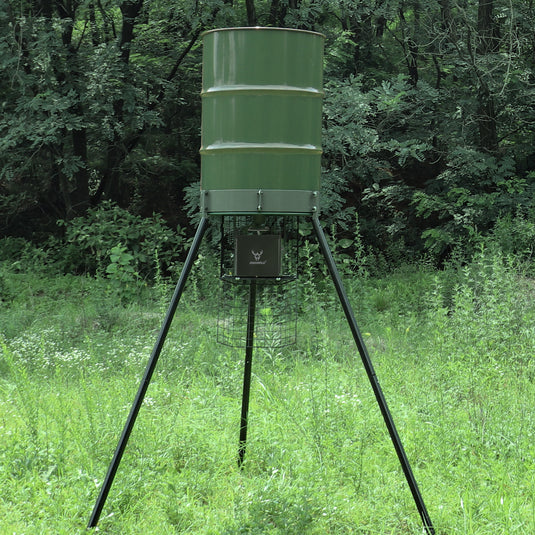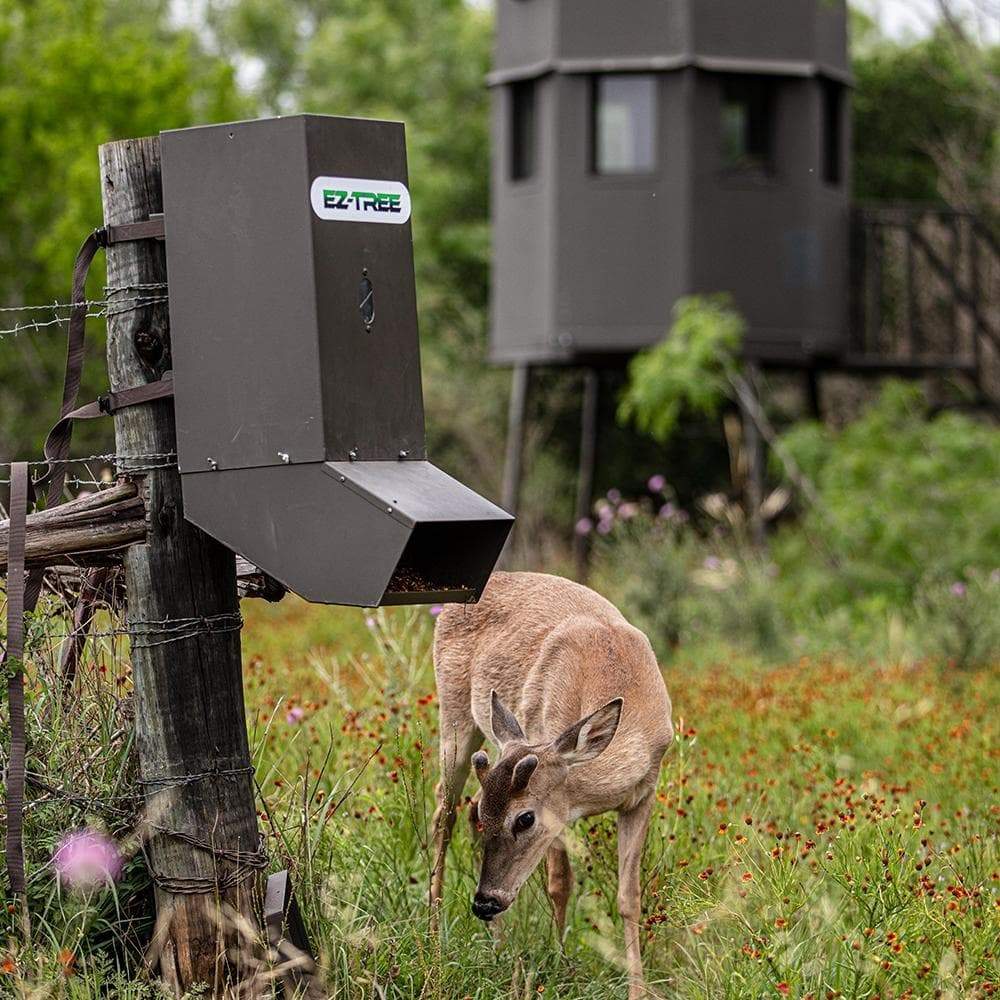The Duty of Deer Feeders in Wild Animals Administration and Environment Preservation
Are you curious about wildlife management and habitat preservation? Discover the important duty of deer feeders in achieving these objectives. By enhancing deer nutrition and managing populations, feeders assist lessen problems in between deer and human beings. Furthermore, they add to improving and promoting balanced ecosystems habitat high quality. In this article, we will explore the numerous benefits of deer feeders and their importance in wildlife administration and conservation efforts. Let's dive in and learn more about these essential tools.
Enhancing Deer Nutrition and Health

Among the major benefits of utilizing a deer feeder is that it allows you to regulate the kind and high quality of feed that deer consume. By utilizing particularly developed deer feed, you can offer vital nutrients that may be doing not have in their all-natural diet. This is specifically crucial during times of limited forage schedule, such as the winter season months or during durations of drought.
Furthermore, deer feeders can help boost the general health of the deer population by lowering competition for food. When food resources end up being scarce, deer might end up being extra territorial and aggressive, bring about fights and injuries. By giving a constant food source with a deer feeder, you can help reduce this competitors and promote an extra harmonious feeding setting.
Along with enhancing nutrition, deer feeders can likewise be made use of as an administration device to attract deer to particular locations for monitoring or searching purposes. By tactically positioning feeders in wanted locations, you can create chances for wild animals fanatics and seekers to observe and communicate with deer in a regulated and lasting manner.

Taking Care Of Deer Populations
To properly manage deer populaces, it is important to carry out strategies that prioritize lasting populace control and habitat conservation. One key element of taking care of deer populations is via using controlled searching. By carefully controling the variety of deer collected each year, wildlife managers can stop overpopulation and maintain the deer populace at a sustainable and healthy and balanced degree. This aids to lower the negative influences of deer on their habitat, such as overgrazing and damage to plant life.
Another important strategy in managing deer populations is the development and upkeep of ideal environments. Supplying plentiful and diverse food sources, sanctuary, and water is crucial for deer populations to thrive - feedthatgame.com. This consists of preserving and recovering all-natural habitats, as well as executing habitat renovation tasks. By improving the high quality of the habitat, deer populations can better maintain themselves and stay clear of coming to be reliant on extra feeding.
Minimizing Human-Deer Problems
To lessen conflicts in between deer and people, it is necessary to implement reliable techniques that address the variables adding to these conflicts (feedthatgame.com). One crucial element is environment damage, as urbanization and development encroach upon all-natural deer habitats. By maintaining and creating environment-friendly areas, such as parks and wild animals passages, we can provide different habitats for deer and minimize their interaction with people
Another aspect to consider is the schedule of food sources. Deer are drawn in to residential locations when they locate quickly obtainable food, such as gardens and decorative plants. To reduce this, it is crucial to inform homeowners regarding deer-resistant landscape design options and to promote using fencing or various other deterrents to protect gardens.
In addition, managing deer populations via responsible hunting techniques can help reduce problems. By executing searching periods and bag limits, we can maintain a well balanced deer population, which decreases competition for resources and lowers the chance of deer encroaching on wikipedia reference human areas.
Moreover, public recognition campaigns can play a considerable role in reducing disputes. These projects can enlighten the public concerning the value of keeping a risk-free range from deer, staying clear of feeding them, and effectively dealing with waste to avoid attracting them. By promoting liable habits, we can reduce negative communications in between deer and human beings.
Encouraging Balanced Ecosystems
Promote a well balanced environment by motivating natural minimizing and foraging actions dependence on deer feeders. While deer feeders might feel like a convenient method to bring in and maintain deer populaces, they can interrupt the delicate balance of a community. By depending entirely on deer feeders, deer may become depending on the very easy food source, bring about overpopulation and adverse influence on plants and other wild animals.
Motivating natural foraging behaviors is essential for preserving a healthy and balanced ecosystem. Permitting deer to forage for their food aids them establish important abilities, such as recognizing and choosing nutritious plants. It additionally stops overgrazing in certain areas, ensuring an extra even circulation of sources and minimizing the risk of environment deterioration.
Reducing dependence on deer feeders can likewise benefit various other wildlife types. When deer congregate at feeders, it can create an artificial focus of pets, which might lead to increased competitors for resources and greater transmission rates of conditions. By promoting all-natural foraging, deer will spread throughout their habitat, minimizing the danger of illness transmission and supporting an extra balanced and varied environment.
Along with minimizing dependence on deer feeders, it is important to concentrate on environment conservation and remediation. By boosting natural environments, we can provide a bigger range of food resources for deer check here and other wild animals. This includes planting indigenous vegetation, creating food plots, and protecting all-natural corridors for motion.
Improving Environment Top Quality and Conservation Efforts
You can dramatically enhance habitat high quality and conservation initiatives by regularly executing repair and conservation practices. By restoring and preserving natural habitats, you supply a lasting and secure environment for wild animals to flourish. One method to enhance environment top quality is by growing indigenous plant life. Native plants provide food and shelter for a variety of animals, including deer. They also help maintain a balanced ecosystem by attracting pollinators and supporting the food web. Furthermore, you can produce and preserve water resources such as fish ponds or little streams. These water features function as vital alcohol consumption and bathing areas for deer and other wild animals. In addition, it is crucial to regulate intrusive types that can harm the native environment. Frequently Look At This keeping an eye on and eliminating invasive plants can stop them from outcompeting indigenous species and disrupting the ecological community. Practicing responsible land management strategies, such as rotational grazing or managed burns, can also add to habitat renovation. These methods help keep healthy plant life and stop habitat deterioration. By carrying out these restoration and conservation practices, you play a crucial role in boosting habitat high quality and conservation efforts for deer and various other wildlife.
Final Thought
In conclusion, deer feeders play a critical duty in wild animals administration and environment conservation. By offering improved nutrition and advertising deer wellness, they add to the general wellness of the deer population.
By enhancing deer nourishment and handling populations, feeders help minimize problems in between deer and humans.To enhance deer nutrition and health and wellness, you can supplement their all-natural forage with a deer feeder.In addition, deer feeders can assist enhance the overall wellness of the deer populace by minimizing competition for food. While deer feeders may appear like a practical way to bring in and maintain deer populations, they can interfere with the fragile balance of a community. By relying only on deer feeders, deer might become reliant on the very easy food resource, leading to overpopulation and unfavorable impacts on vegetation and other wild animals.